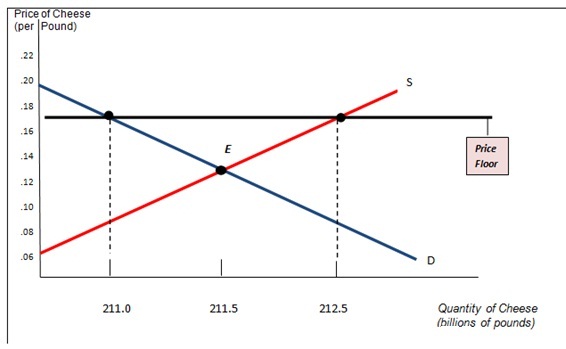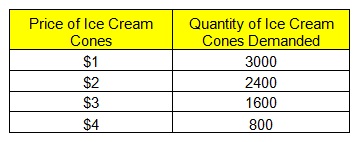Question 1: Assume that the U.S. Department of Agriculture (USDA) administers the price floor for cheese, set at $0.17 per pound of cheese. (The price floor is formally set at $16.10 per hundredweight of cheese. One hundredweight is 100 pounds.) At that price, according to data from USDA, the quantity of cheese produced in 2009 by U.S. producers was 212.5 billion pounds and the quantity demanded was 211 billion pounds. To support the price of cheese at price floor, the USDA had to buy up 1.5 billion pounds of cheese. The accompanying diagram exhibits supply and demand curves describing the market for cheese.

a) In the absence of price floor, how much consumer surplus is created? How much producer surplus? Find out the total surplus?
b) With the price floor at $0.17 per pound of cheese, consumers buy 211 billion pounds of cheese. How much consumer surplus is created now?
c) With the price floor at $0.17 per pound of cheese, producers sell 212.5 billion pounds of cheese (some to consumers and some to USDA). How much producer surplus is created now?
d) How much money does the USDA spend on buying up surplus cheese?
e) Taxes should be collected to pay for the purchases of surplus cheese by the USDA. As an outcome, total surplus (producer plus consumer) is decreased by the amount the USDA spent on buying surplus cheese. By using your answers for parts b to d, what is the total surplus when there is a price floor? How does this compare to the total surplus devoid of a price floor from part a?
Question 2: The accompanying table exhibits the price and yearly quantity sold of ice cream cones on Sidfield Island.

a) By using the midpoint method, compute the price elasticity of demand when the price of an ice cream cone rises from $1 to $2. What does this estimate imply regarding the price elasticity of demand for ice cream cones?
b) By using the midpoint method, compute the price elasticity of demand when the price of an ice cream cone rises from $3 to $4. What does this estimate imply regarding the price elasticity of demand for ice cream cones?
c) Notice that the estimates from (a) and (b) above are different. Why do price elasticity of demand estimates change all along the demand curve?